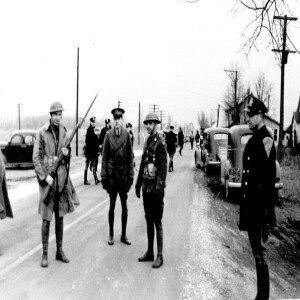
- Podcast Features
-
Monetization
-
Ads Marketplace
Join Ads Marketplace to earn through podcast sponsorships.
-
PodAds
Manage your ads with dynamic ad insertion capability.
-
Apple Podcasts Subscriptions Integration
Monetize with Apple Podcasts Subscriptions via Podbean.
-
Live Streaming
Earn rewards and recurring income from Fan Club membership.
-
Ads Marketplace
- Podbean App
-
Help and Support
-
Help Center
Get the answers and support you need.
-
Podbean Academy
Resources and guides to launch, grow, and monetize podcast.
-
Podbean Blog
Stay updated with the latest podcasting tips and trends.
-
What’s New
Check out our newest and recently released features!
-
Podcasting Smarter
Podcast interviews, best practices, and helpful tips.
-
Help Center
-
Popular Topics
-
How to Start a Podcast
The step-by-step guide to start your own podcast.
-
How to Start a Live Podcast
Create the best live podcast and engage your audience.
-
How to Monetize a Podcast
Tips on making the decision to monetize your podcast.
-
How to Promote Your Podcast
The best ways to get more eyes and ears on your podcast.
-
Podcast Advertising 101
Everything you need to know about podcast advertising.
-
Mobile Podcast Recording Guide
The ultimate guide to recording a podcast on your phone.
-
How to Use Group Recording
Steps to set up and use group recording in the Podbean app.
-
How to Start a Podcast
-
Podcasting
- Podcast Features
-
Monetization
-
Ads Marketplace
Join Ads Marketplace to earn through podcast sponsorships.
-
PodAds
Manage your ads with dynamic ad insertion capability.
-
Apple Podcasts Subscriptions Integration
Monetize with Apple Podcasts Subscriptions via Podbean.
-
Live Streaming
Earn rewards and recurring income from Fan Club membership.
-
Ads Marketplace
- Podbean App
- Advertisers
- Enterprise
- Pricing
-
Resources
-
Help and Support
-
Help Center
Get the answers and support you need.
-
Podbean Academy
Resources and guides to launch, grow, and monetize podcast.
-
Podbean Blog
Stay updated with the latest podcasting tips and trends.
-
What’s New
Check out our newest and recently released features!
-
Podcasting Smarter
Podcast interviews, best practices, and helpful tips.
-
Help Center
-
Popular Topics
-
How to Start a Podcast
The step-by-step guide to start your own podcast.
-
How to Start a Live Podcast
Create the best live podcast and engage your audience.
-
How to Monetize a Podcast
Tips on making the decision to monetize your podcast.
-
How to Promote Your Podcast
The best ways to get more eyes and ears on your podcast.
-
Podcast Advertising 101
Everything you need to know about podcast advertising.
-
Mobile Podcast Recording Guide
The ultimate guide to recording a podcast on your phone.
-
How to Use Group Recording
Steps to set up and use group recording in the Podbean app.
-
How to Start a Podcast
-
Help and Support
- Discover

On this day in labor history, the year was 1937.
That was the day Indiana Governor, M. Clifford Townsend, dispatched State National Guard troops to Anderson, Indiana.
The national strike against GM had just ended in victory for the union two days earlier.
UAW forces were emboldened by the militancy, solidarity and public support for the union in Flint. But Anderson was a company town.
It was home to GM’s Guide Lamp and Delco-Remy divisions.
GM employed over 11,000 of the town’s 40,000 residents.
Guide Lamp workers struck in late December and Delco-Remy plants closed to prevent sit-downs.
Foremen visited workers in their homes, demanding signatures for back-to-work petitions.
The Citizens League for Industrial Security whipped almost half the town into an anti-union frenzy.
The entire month of January was so marred by anti-union violence and intimidation, the strike had to be abandoned.
When the national strike ended, the UAW organized a victory meeting.
It was held virtually under siege by an anti-union mob.
Victor Reuther recalled he aged 10 years that night.
Anti-union violence broke out the next evening at the Gold Band Tavern.
The bar owner shot and wounded at least 10 UAW members.
Union backup headed to Anderson. Fearing UAW forces, the Indiana National Guard was deployed and Madison County was placed under martial law for 10 days.
In the classic history of the Flint Sit-Down, Sidney Fine explains that anti-union sentiment began to break down once workers learned GM had been forced to eliminate incentive pay.
The union newspaper proclaimed: “The men and women who fought on the picket line; who withstood the terror of the vigilantes; who kept their faith under trying conditions; these people changed the conditions in the shops.”
More Episodes
 2024-09-22
2024-09-22
 2024-09-21
2024-09-21
 2024-09-20
2024-09-20
 2024-09-19
2024-09-19
 2024-09-18
2024-09-18
 2024-09-17
2024-09-17
 2024-09-16
2024-09-16
 2024-09-10
2024-09-10
 2024-09-09
2024-09-09
 2024-09-07
2024-09-07
 2024-09-06
2024-09-06
 2024-09-06
2024-09-06
Create your
podcast in
minutes
- Full-featured podcast site
- Unlimited storage and bandwidth
- Comprehensive podcast stats
- Distribute to Apple Podcasts, Spotify, and more
- Make money with your podcast
It is Free
- Privacy Policy
- Cookie Policy
- Terms of Use
- Consent Preferences
- Copyright © 2015-2025 Podbean.com


